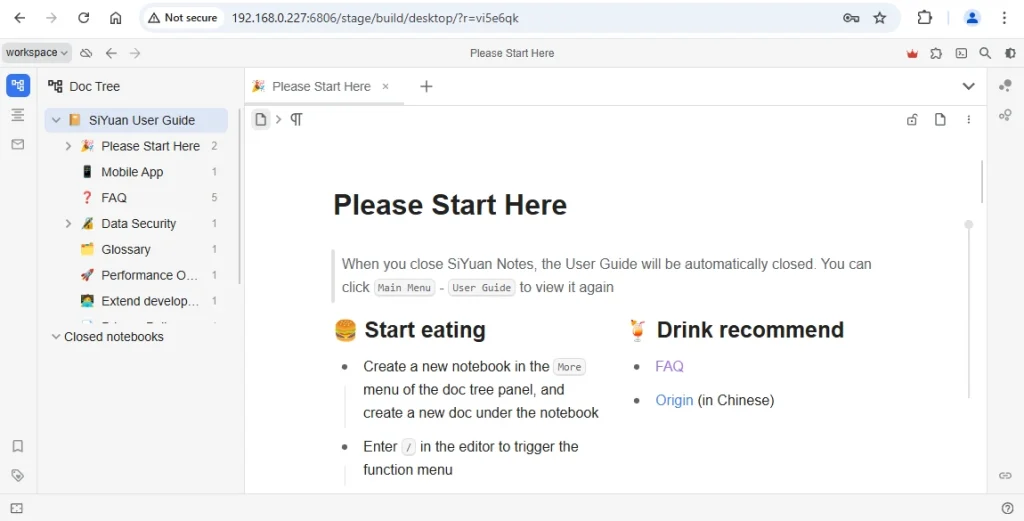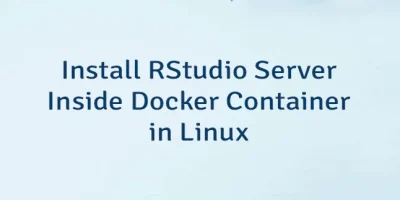SiYuan is an open-source, personal knowledge management (PKM) and note-taking tool. It supports a block-based editor with Markdown, bidirectional linking, a graph view, and end-to-end encryption and more.
This tutorial explains how to install SiYuan inside a Docker container on Linux. Commands have been tested on Ubuntu.
Prepare environment
Make sure you have installed Docker in your system. If you are using Ubuntu, installation instructions can be found in the post.
Install SiYuan
- Host network
Run the following command to create a container for SiYuan that uses host network:
docker run -d --name=siyuan --restart=always --network=host \
-v /opt/siyuan/workspace:/opt/siyuan/workspace \
b3log/siyuan --workspace=/opt/siyuan/workspace --accessAuthCode=pwd123- User-defined bridge network
User-defined bridge network can be used for listening on different port. By default, SiYuan service is listening on port 6806. It can be changed with -p option.
docker network create app-netdocker run -d --name=siyuan --restart=always --network=app-net \
-p 8080:6806 \
-v /opt/siyuan/workspace:/opt/siyuan/workspace \
b3log/siyuan --workspace=/opt/siyuan/workspace --accessAuthCode=pwd123Note: don't forget to chage the authorization code used for logging into SiYuan workspace.
Testing SiYuan
Open a web browser and navigate to http://<IP_ADDRESS>:6806, replacing <IP_ADDRESS> with the system's actual IP address. Then, log in to the workspace using the authorization code.

Uninstall SiYuan
To completely remove SiYuan, remove its container:
docker rm --force siyuanRemove SiYuan image:
docker rmi b3log/siyuanYou can also remove SiYuan data:
sudo rm -rf /opt/siyuanIf a user-defined bridge network was created, you can delete it as follows:
docker network rm app-net



Leave a Comment
Cancel reply